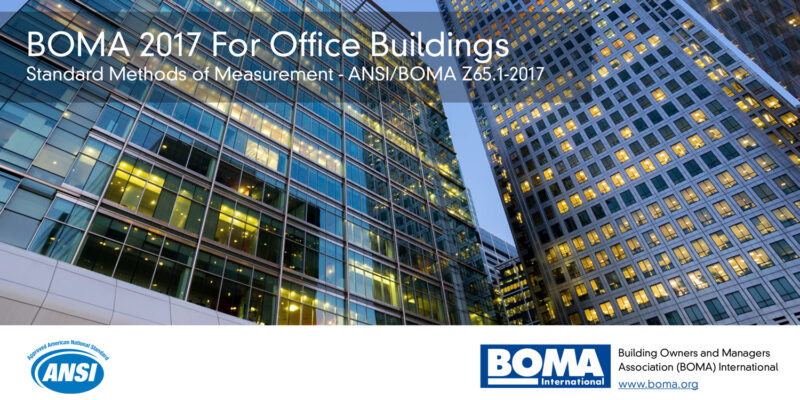In the ever-evolving landscape of the real estate industry, precision and uniformity are paramount. Accurate measurements are the bedrock of sound real estate valuations, and this is where the BOMA Standard of Measurement comes into play. In this blog, we will delve into the significance of this standard and how it shapes real estate valuations.
Understanding BOMA Standard of Measurement
Historical Background
The BOMA Standard of Measurement, established by the Building Owners and Managers Association, has a rich historical background. It was first introduced to provide a consistent method for calculating rentable square footage in office buildings. Over time, it has evolved to encompass various property types, offering a standardized approach for measuring space.
Key Principles and Concepts
The fundamental ideas of BOMA standards separate rentable area from gross area. Making this distinction is essential to correctly estimating the amount of space that is for lease. This framework also includes common area and load factors to guarantee that tenants are only charged for the space they actually occupy. The uniformity of the language and procedures employed by BOMA standards facilitates real estate transactions.
Advantages of BOMA Standard in Real Estate Valuations
Consistency and Uniformity
The uniformity that the BOMA Standard of Measurement offers the real estate sector is among its greatest benefits. Properties measured with this standard follow a common methodology regardless of location. Investors, tenants, and real estate professionals all benefit from this consistency in terms of openness and trust.
Enhancing Market Transparency
Level playing fields are produced in the real estate market by standardization. When potential tenants and investors are aware that BOMA standards have been followed, they can compare properties with ease. Decision-making is made easier by this transparency, which also lessens the likelihood of disagreements over space measurements.
Reducing Disputes and Litigation
By providing a clear and standardized framework, BOMA standards significantly reduce disputes and potential litigation related to property measurements. Property owners and tenants can rely on these standardized measurements, reducing the risk of costly legal battles.
Impact on Investment Decision-Making
To make wise decisions, real estate investors depend on reliable data. The BOMA standards offer a solid basis for evaluating possible investments. Comparing and assessing various properties’ income potential is made simpler when valuations are based on standard measurements.
The Application of BOMA Standard
Commercial Real Estate
Commercial real estate, including office spaces and retail properties, widely adopts BOMA standards. This application ensures that tenants and property owners can trust the measurements and base their leasing decisions on a standardized, reliable foundation.
Office Space Leasing
Office spaces are particularly benefited by the BOMA Standard of Measurement. The clear differentiation between rentable and gross areas, along with standardized load factors, streamlines the leasing process and eliminates confusion.
Industrial and Retail Properties
Industrial and retail properties also find value in BOMA standards. These standards enable consistent and transparent measurements, which is essential in attracting tenants and investors to these types of properties.
Mixed-Use Developments
BOMA standards can also be advantageous for mixed-use developments, which comprise both commercial and residential areas. Accurate valuation of the various components of such developments is made possible by the standardization of measurements.
Challenges and Criticisms
Limitations of BOMA Standard
While the BOMA Standard of Measurement offers many advantages, it’s not without limitations. For instance, it may not be suitable for properties with unconventional layouts or unique characteristics. In such cases, adjustments may be necessary.
Instances where BOMA Standard may not be Appropriate
Certain property types, such as specialized manufacturing facilities, may not align with the BOMA standard’s methodology. It’s crucial to recognize when alternative approaches are more suitable.
Alternatives and Complementary Approaches
In some situations, a hybrid approach or complementary methods may be required. Real estate professionals should be aware of these alternatives to provide accurate measurements in all scenarios.
Staying Updated with BOMA Standards
Evolving Standards and Revisions
BOMA standards are not static; they evolve to address the changing needs of the real estate industry. Staying informed about these revisions is essential for real estate professionals to maintain accuracy in their valuations.
Resources for Real Estate Professionals
When applying BOMA standards, real estate professionals should look for training and resources to make sure they fully comprehend and apply the standards. Guidelines for BOMA measurements are provided by a number of organizations and courses.
Training and Certification Programs
For those wishing to specialize in BOMA standard measurements, certification programs are available. These programs can enhance your expertise and credibility in the real estate industry.
Conclusion
In the real estate valuations, precision and consistency are paramount. The BOMA Standard of Measurement plays a pivotal role in achieving these goals. By providing a uniform, transparent, and reliable method for measuring space, it bolsters trust among all stakeholders in the real estate industry. As the real estate landscape continues to evolve, adopting BOMA standards is a smart move for property owners, tenants, and investors. At Measure Up Corp, we recognize the importance of these standards in achieving precise real estate valuations, and we encourage their adoption to benefit the industry as a whole.



